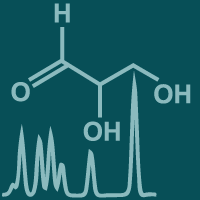Topic Editors


Pharmaceutical and Biomedical Applications in Separation Techniques: Recent Trends and Developments
Topic Information
Dear Colleagues,
The analysis of pharmaceuticals, drugs and their metabolites, and biomolecules (proteins, peptides, oligonucleotides, etc.) from different matrices (plasma, serum, oral fluid, urine, etc.) is of great interest to academia and industry. The development of new and green extraction methodologies and validated analytical methods of separation and analysis is therefore of the utmost importance.
Chromatographic techniques such as liquid and gas chromatography are the most frequently used analytical techniques. In addition to these, miniaturized techniques such as capillary electrophoresis, nano-liquid chromatography, and lab-on-a-chip devices are also of great interest; hyphenated detection techniques improve the state of the art of conventional analytical instrumentation. Furthermore, with the further evolution of the classical techniques, instrumental methodologies such as ultra-performance liquid chromatography, supercritical fluid chromatography, capillary electrochromatography, and 2D and 3D systems have seen significant enhancement.
This topic aims to put together original research papers and review articles that demonstrate the recent advances in separation techniques, including all aspects of extraction methodologies, method development, analytical method validation, and application to the various matrices. We therefore encourage authors to submit analyses of chiral and achiral pharmaceuticals, drugs, impurities from pharmaceutical dosage forms, newly developed drug delivery systems, biological media (therapeutic drug monitoring, etc.), environmental samples, targeted and untargeted omics (metabolomics, proteomics, lipidomics, etc.), and substances of abuse.
Dr. Mehmet Gumustas
Prof. Dr. Emirhan Nemutlu
Prof. Dr. Sibel A. Ozkan
Topic Editors
Keywords
- sample preparation
- liquid chromatography
- gas chromatography
- separation techniques
- mass spectrometry
- chiral molecules
- biological samples
- pharmaceuticals
- natural products
- omics
- drug delivery systems
- censors
Participating Journals
| Journal Name | Impact Factor | CiteScore | Launched Year | First Decision (median) | APC | |
|---|---|---|---|---|---|---|

Metabolites
|
4.1 | 5.3 | 2011 | 13.2 Days | CHF 2700 | Submit |

Molecules
|
4.6 | 6.7 | 1996 | 14.6 Days | CHF 2700 | Submit |

Pharmaceuticals
|
4.6 | 4.7 | 2004 | 14.6 Days | CHF 2900 | Submit |

Pharmaceutics
|
5.4 | 6.9 | 2009 | 14.2 Days | CHF 2900 | Submit |

Separations
|
2.6 | 2.5 | 2014 | 13.6 Days | CHF 2600 | Submit |

MDPI Topics is cooperating with Preprints.org and has built a direct connection between MDPI journals and Preprints.org. Authors are encouraged to enjoy the benefits by posting a preprint at Preprints.org prior to publication:
- Immediately share your ideas ahead of publication and establish your research priority;
- Protect your idea from being stolen with this time-stamped preprint article;
- Enhance the exposure and impact of your research;
- Receive feedback from your peers in advance;
- Have it indexed in Web of Science (Preprint Citation Index), Google Scholar, Crossref, SHARE, PrePubMed, Scilit and Europe PMC.


